- Home
- Ian Fleming
Bond 12 - You Only Live Twice Page 7
Bond 12 - You Only Live Twice Read online
Page 7
‘And what might that be?’
‘Have been,’ Tiger corrected him. ‘The Society was officially disbanded before the war. But in its heyday it was the most feared and powerful secret society in Japan. It consisted originally of the dregs of the sōshi – the unemployed samurai who were left high and dry after the Meiji Restoration of about a hundred years ago – but it later recruited terrorists, gangsters, Fascist politicos, cashiered officers from the navy and army, secret agents, soldiers of fortune and other riff-raff, but also big men in industry and finance, and even the occasional Cabinet Minister who found Black Dragon support of much practical value when dirty work had to be done. And the odd thing is, though it does not seem so odd to me today, that the doctor should have chosen his site, leaving out its practical amenities, in just that corner of Japan that used to be the headquarters of the Black Dragons and has always been a hotbed of extremists. Toyama Mitsuru, the former head of the Black Dragons, came from Fukuoka; so did the anarchist Hirota, and Nakano, leader of the former Tohokai, or Fascist group, in the Diet. It has always been a nest of scoundrels, this district, and it remains so today. These extreme sects never die out completely, as you have recently, my dear Bondo-san, found in the resurgence of the Black Shirts in England, and this Doctor Shatterhand found no difficulty in collecting some twenty extremely tough and dangerous characters around him, all most correctly clothed as servants and gardeners and, no doubt, perfectly good at their ostensible jobs. On one occasion the Prefect of Police thought it his duty to make a courtesy call and give his distinguished inhabitant a word of caution. But the doctor dismissed the matter on the grounds that competent guards would be necessary to maintain his privacy and keep trespassers away from his valuable collection of plants. This seemed reasonable enough, and anyway the doctor appeared to be under high patronage in Tokyo. The Prefect bowed himself out, much impressed with the lavish display of wealth in evidence in the heart of his poor province.’
Tiger Tanaka paused and poured more saké for Bond and more Suntory for himself. Bond took the opportunity to ask just how dangerous this Black Dragon Society had really been. Was it the equivalent of the Chinese tongs?
‘Much more powerful. You have heard of the Ching-Pang and Hung-Pang tongs that were so much feared in China in the days of the Kuomintang. No? Well the Black Dragons were a hundred times worse. To have them on your heels was certain death. They were totally ruthless, and not out of any particular political conviction. They operated strictly for cash.’
‘Well, under this doctor from Switzerland, have they done any harm yet?’
‘Oh no. They are nothing more than he says – personal staff, at the worst, if you like, a bodyguard. No. The trouble is quite different, much more complex. You see, this man Shatterhand has created what I can only describe as a garden of death.’
Bond raised his eyebrows. Really, for the head of a national secret service, Tiger’s metaphors were almost ridiculously dramatic.
Tiger exploded his golden smile. ‘Bondo-san, I can see from your face that you think I am either drunk or mad. Now listen. This Doctor Shatterhand has filled this famous park of his uniquely with poisonous vegetation, the lakes and streams with poisonous fish, and he has infested the place with snakes, scorpions and poisonous spiders. He and this hideous wife of his are not harmed by these things, because whenever they leave the castle he wears full suits of armour of the seventeenth century, and she wears some other kind of protective clothing. His workers are not harmed because they wear rubber boots up to the knee, and maskos, that is, antiseptic gauze masks such as many people in Japan wear over the mouth and nose to avoid infection or the spreading of infection.’
‘What a daft set-up.’
Tiger reached into the folds of the yukata he had changed into when they entered the house. He brought out several sheets of paper pinned together. He handed them over to Bond and said, ‘Be patient. Do not judge what you do not understand. I know nothing of these poisonous plants. Nor, I expect, do you. Here is a list of those that have so far been planted by this doctor, together with comments by our Ministry of Agriculture. Read it. Take your time. You will be interested to learn what charming vegetation grows on the surface of the globe.’
Bond took the papers. The first page was a general note on vegetable poisons. There followed an annotated list. The papers bore the seal of the Ministry of Agriculture. This is what he read:
The poisons listed fall into six main categories:
Deliriant. Symptoms: spectral illusions, delirium; dilated pupils; thirst and dryness; incoordination; then paralysis and spasms.
Inebriant. Symptoms: excitement of cerebral functions and of circulation; loss of coordination and muscular movements; double vision; then sleep and deep coma.
Convulsivant. Symptoms: intermittent spasms, from head downwards. Death from exhaustion, usually within three hours, or rapid recovery.
Depressant. Symptoms: vertigo, vomiting, abdominal pain, confused vision, convulsions, paralysis, fainting, sometimes asphyxia.
Asthenic. Symptoms: numbness, tingling mouth, abdominal pain, vertigo, vomiting, purging, delirium, paralysis, fainting.
Irritant. Symptoms: burning pain in throat and stomach, thirst, nausea, vomiting. Death by shock, convulsions or exhaustion; or starvation by injury to throat or stomach.
SPECIMENS LISTED BY CUSTOMS AND EXCISE DEPARTMENT AS IMPORTED BY DOCTOR GUNTRAM SHATTERHAND
Jamaica dogwood, fish-poison tree (Piscidia erythrina): Tree, 30 ft. White and blood-coloured flowers. Inebriant. Toxic principle: piscidine. W. Indies.
Nux-vomica tree, poison-nut, crow-fig, kachita (Strychnos nux-vomica): Tree, 40 ft. Smooth bark, attractive fruits, which have bitter taste. Greenish-white flowers. Seeds most poisonous part. Convulsivant. Toxic principle: strychnine, brucine. S. India, Java.
Guiana poison-tree (Strychnos toxifera): curare arrow-poison taken from bark. Creeper. Death within one hour from respiratory paralysis. Toxic principles: curare, strychnine, brucine. Guiana.
St Ignatius’s bean (Strychnos Ignatii): small tree, seeds yield brucine. Convulsivant. Philippines.
False Upas-tree (Strychnos tieuté): large climbing shrub. Strychnine or brucine from leaf, seed, stem or root-bark. Java.
East Indian snakewood (Strychnos colubrina): climbing tree. Yields strychnine, brucine. Convulsivant. Java, Timor.
Ipecacuanha (Psychotria ipecacuanha): shrubby plant. Depressant. Toxic principle: emetine, from root. Brazil.
White-woolly Kombe bean, Gaboon arrow poison (Stropanthus hispidus): woody climber, 6 ft. Toxic principle: strophanthin, incine. Asthenic. W. Africa.
Ordeal-tree, poison tanghin (Tanghinia venenifera or cerbera tanghin): small evergreen tree, 20 ft. Fruit purplish, tinged with green. Toxic principle: tanghinine, cerberin. Asthenic. Madagascar.
Upas-tree, Malay arrow-poison tree (Antiaris toxicaria): jungle tree–100 ft. before branches start. Wood light, white, hard, milk-bearing. Toxic principle: antiarin, from milky sap. Asthenic. Java, Borneo, Sumatra, Philippines.
Poison ivy, trailing poison oak (Rhus toxicodendron): climbing shrub. Greenish-yellow flowers. Stem contains milky juice – irritant. Toxic principle: toxicodendrol. U.S.A.
Yellow oleander, campanilla, be-still tree (Thevetia peruviana): small tree. All parts can be fatally toxic, particularly fruit. Pulse slows, vomiting, shock. Hawaii.
Castor bean plant (Ricinus communis): seeds are source of castor oil, also contain toxic principle, ricin. Harmless if eaten. If it enters the circulation through scratch or abrasion is fatal within 7-10 days. One hundredth of a milligram can kill a 200 lb. man. Loss of appetite, emesis, purgation, delirium, collapse and death. Hawaii, S. America.
Common oleander (Nerium Indicum): evergreen shrub. The roots, bark, juice, flowers and leaves all fatally toxic. Acts chiefly on the heart. Used in India as leprosy treatment, abortifacient, means of suicide. India, Hawaii. One death was due to the victim’s having eaten meat cooked over an open fire, spit
ted on a stick of oleander wood.
Rosary pea, crab’s eye, Jequiritz bean (Abrus precatorius): climbing shrub. Small shiny red seeds weigh average 1.75 grains, used by Indian goldsmiths as weights. Seeds are ground down into a paste with a little cold water, made into small pointed cylinders. If these are inserted beneath skin of human or animal death occurs within four hours. India, Hawaii.
Jimson weed (Datura stramonium): variety of thorn apple plant, found in N. Africa, India. Also: Ololiuqui (D. meteloides) from Mexico, and D. tatula from Central and South America. All three are hallucinatory. D. stramonium’s apples are smoked by Arabs and Swahilis, leaves eaten by E. African Negroes, seeds added to hashish and leaves to hemp by Bengalese Indians. D. tatula was used as a truth-drug by Zapotec Indians in courts of law. Addiction to toloachi, a drink made from D. tatula, causes chronic imbecility.
Gloriosa superba: spectacularly beautiful climbing lily. Roots, stalks, leaves contain an acrid narcotic, superbine, as well as colchicine and choline. Three grains of colchicine are fatal. Hawaii.
Sand-box tree (Hura crepitans): whole tree contains an active emetocathartic, used as a fish-poison in Brazil. Also contains crepitin, same group of poisons as ricin. Harmless if swallowed, must be taken into circulation through wound to be fatal. Death comes in 7-10 days. C. and S. America.
Pride-of-India, Chinaberry tree, China tree (Melia azedarach): small tree. Beautiful dark-green leaves, lavender blossoms. Fruit contains toxic narcotic which attacks entire central nervous system. Hawaii, C. and S. America.
Physic nut (Jatropha curcas): bushy tree. Raw seeds violently purgative, often fatal due to exhaustion. Caribbean.
Mexican tuber, camotillo: wild potato, grows generally. According to Indian tradition, it is plucked during the waning of the moon; it is alleged to begin deadly action the same number of days after consumption as it was stored after being dug up. Toxic principle: solanine. Central and S. America.
Divine mushroom (Amanita mexicana): closely related to European Fly Agaric. Black mushroom, eaten fresh or steeped in warm milk laced with agave spirits. Causes hypersensitivity of the skin surface, ultra-acute hearing and sight, then hallucinations of several hours, followed by deep melancholia. Active principle unknown. Central and S. America.
Bond finished his reading. He handed the papers back. He said, ‘Doctor Shatterhand’s garden is indeed a lovesome thing, God wot.’
‘And you have of course heard of the South American piranha fish? They can strip a whole horse to the bones in less than an hour. The scientific name is Serrasalmus. The sub-species Nattereri is the most voracious. Our good doctor has preferred these fish to our native goldfish for his lakes. You see what I mean?’
‘No,’ said Bond, ‘frankly I don’t. What’s the object of the good doctor’s exercise?’
8 ....... SLAY IT WITH FLOWERS
IT WAS three o’clock in the morning. The noise of the traffic to Yokohama had died. James Bond didn’t feel tired. He was now totally absorbed in this extraordinary story of the Swiss doctor, who, as Tiger had originally said, ‘collected death’. Tiger wasn’t telling him this bizarre case history for his entertainment. There was going to come a moment of climax. What would that climax be?
Tiger wiped his hand over his face. He said, ‘Did you read a story in the evening edition of the Asahi today? It concerned a suicide.’
‘No.’
‘This was a young student aged eighteen who had failed his examination for the university for the second time. He lived in the suburbs of Tokyo. There was construction work on a new departmento, a department store, going on near where he lived. He went out of his room on to the site. A pile-driver was at work, sinking the foundations. Suddenly this youth broke through the surrounding workmen and, as the pile came crashing down, laid his head on the block beneath it.’
‘What a ghastly business! Why?’
‘He had brought dishonour on his parents, his ancestors. This was his way of expiation. Suicide is a most unfortunate aspect of the Japanese way of life.’ Tiger paused. ‘Or perhaps a most noble one. It depends how you look at it. That boy, and his family, will have gained great face in his neighbourhood.’
‘You can’t gain face from strawberry jam.’
‘Think again, Bondo-san. Your posthumous V.C.s, for instance?’
‘They’re not awarded for committing suicide after failing in an examination.’
‘We are not so demokorasu as you are.’ There was irony in Tiger’s voice. ‘Dishonour must be expunged – according to those of us who remain what you would describe as old-fashioned. There is no apology more sincere than the offering up of your own life. It is literally all you have to give.’
‘But even if this boy failed for the university, he could have gone for a lower standard of examination, for a lower grade of college. As you know, we say “Blast!” or perhaps a stronger word if we fail an examination in Britain. But we readjust our sights, or our parents do it for us, and have another bash. We don’t kill ourselves. It wouldn’t occur to us. It would be dishonourable rather than honourable. It would be cowardly – a refusal to stand up to reverses, to life. And it would give great pain to our parents, and certainly no satisfaction to our ancestors.’
‘With us it is different. And despite demokorasu, the parents of this youth will be rejoicing this evening and their neighbours will be rejoicing with them. Honour is more important to us than life – more proud, more beautiful.’
Bond shrugged. ‘Well, I just think that if the boy had the guts to do this thing, it was the waste of a perfectly good Japanese life. In fact, of course, this suicide business in Japan is nothing more than a form of hysteria – an expression of the streak of violence that seems to run all through the history of Japan. If you hold your own life so cheaply, it follows that you will hold others’ lives even more cheaply. The other day, I saw a traffic accident at one of the main crossings. I don’t know the name of it. It was a multiple affair, and there were bodies all over the place. The police came, but instead of concentrating on getting the wounded to hospital, insisted that they should lie where they were so that they could draw chalk lines round them and photograph them – presumably for use when the case came to court.’
‘That is common practice,’ said Tiger indifferently. ‘We are much over-populated. Abortion is legal. It is helping to solve one of our problems if a few extra people die in an automobile accident. But there is something in what you said earlier. Our word for suicide is jisatsu, literally “self-murder”, and although it is a violent solution to a personal problem, it carries no stigma as it would in your country. In fact, one of our most famous folk-tales, known to all children, is of the forty-seven ronin, or bodyguards. Through their negligence, their lord, Asano, was assassinated. They swore to avenge him and they did so. But then they came together at a place called Ako and all committed seppuku to expiate their negligence. This is what you know as hara-kiri, which is a vulgar term meaning “belly-cutting”. Today, at the time of the festival at the Ako shrine, special trains have to be laid on to accommodate the respectful pilgrims.’
‘Well, if you bring your children up on that sort of stuff, you can’t expect them not to venerate the act of suicide.’
‘Just so,’ said Tiger proudly, ‘25,000 Japanese commit suicide every year. Only the bureaucrats regard that as a shameful statistic. And the more spectacular the suicide, the more warmly it is approved. Not long ago, a young student achieved great renown by trying to saw his own head off. Lovers link hands and throw themselves over the very high Kegon Falls at Nikko. The Mihara volcano on the island of Oshima is another favourite locale. People run down the roasting slope of the crater and hurl themselves, their shoes on fire, into the bubbling cauldron in its centre. To combat this popular pastime, the interfering authorities have now opened, at great expense, a “Suicide Prevention Office” on the peak. But always the wheels of the good old-fashioned railway train provide the most convenient guillotine. They have the merit of being s
elf-operating. All you need to do is make a four-foot jump.’
‘You’re a bloodthirsty old bastard, Tiger. But what’s all this lecture about anyway? What’s it got to do with friend Shatterhand and his pretty garden?’
‘Everything, Bondo-san. Everything. You see, much against the good doctor’s wishes of course, his poison garden has become the most desirable site for suicides in the whole of Japan. It has everything – a ride on our famous “Romance” express to Kyoto; a boat trip across our beautiful Inland Sea that is so full of Japanese history; a local train from the terminal harbour at Beppu to Fukuoka and a walk or taxi drive along a beautiful coast to the awe-inspiring ramparts of this mysterious Castle of Death. Climb these, or smuggle yourself in on a provision cart, and then a last delicious, ruminative walk, perhaps hand-in-hand with your lover, through the beautiful groves. And finally the great gamble, the game of pachinko the Japanese love so much. Which ball will have your number on it? Will your death be easy or painful? Will a Russell’s Viper strike at your legs as you walk the silent, well-raked paths? Will some kindly, deadly dew fall upon you during the night as you rest under this or that gorgeous tree? Or will hunger or curiosity lead you to munch a handful of those red berries or pick one of those orange fruit? Of course, if you want to make it quick, there is always a bubbling, sulphurous fumarole at hand. In any one of those, the thousand degrees Centigrade will allow you just enough time for one scream. The place is nothing more than a departmento of death, its shelves laden with delicious packages of self-destruction, all given away for nothing. Can you not imagine that old and young flock there as if to a shrine? The police have erected a barricade across the road. Genuine visitors, botanists and so on, have to show a pass. But the suicides fight their way to the shrine across the fields and marshes, scrabble at the great walls, break their nails to gain entrance. The good doctor is of course much dismayed. He has erected stern notices of warning, with skulls and crossbones upon them. They act only as advertisements! He has even gone to the expense of flying one of those high helium balloons from the roof of his castle. The hanging streamers threaten trespassers with prosecution. But, alas for the doctor’s precautions, the high balloon serves only to beckon. Here is death! it proclaims. Come and get it!’

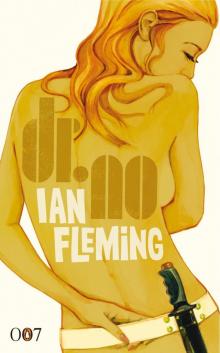 Doctor No
Doctor No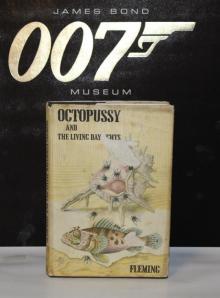 Octopussy & the Living Daylights
Octopussy & the Living Daylights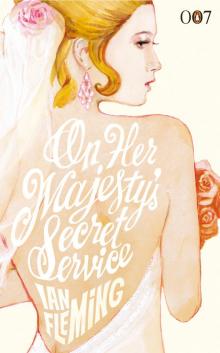 On Her Majestys Secret Service
On Her Majestys Secret Service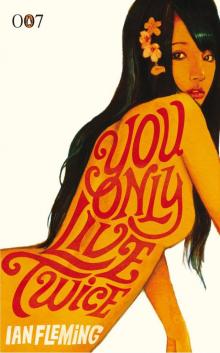 You Only Live Twice
You Only Live Twice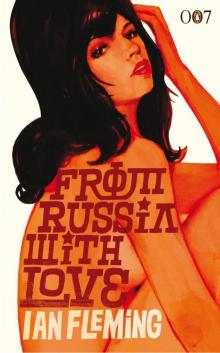 From Russia With Love
From Russia With Love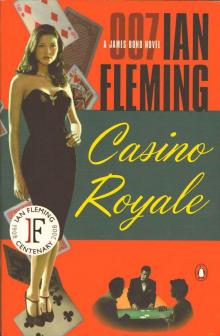 Casino Royale
Casino Royale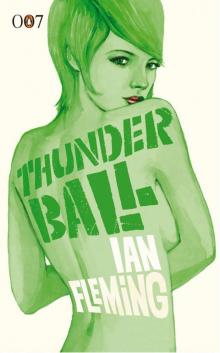 Thunderball
Thunderball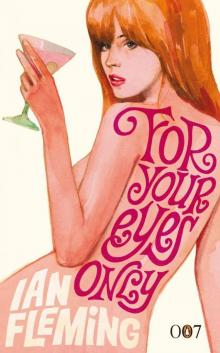 For Your Eyes Only
For Your Eyes Only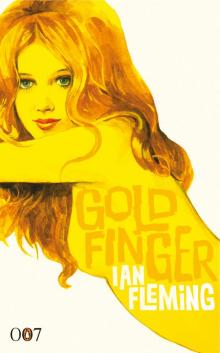 Goldfinger
Goldfinger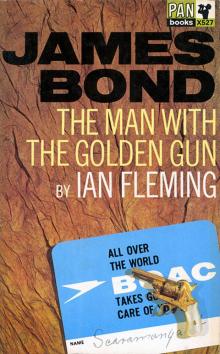 The Man With the Golden Gun
The Man With the Golden Gun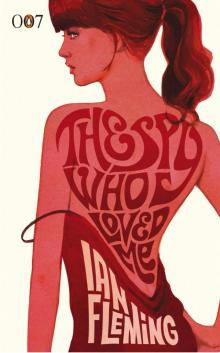 The Spy Who Loved Me
The Spy Who Loved Me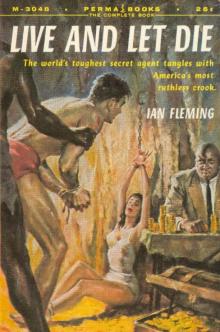 Live and Let Die
Live and Let Die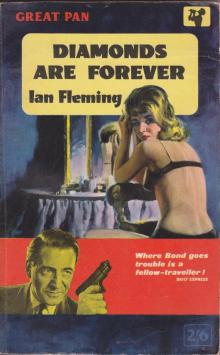 Diamonds Are Forever
Diamonds Are Forever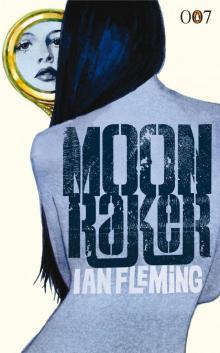 Moonraker
Moonraker The James Bond MEGAPACK®
The James Bond MEGAPACK®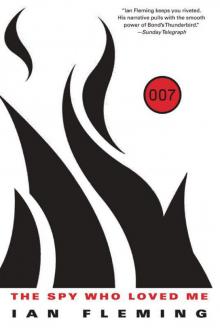 Bond 10 - The Spy Who Loved Me
Bond 10 - The Spy Who Loved Me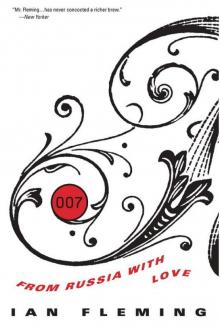 From Russia with Love (James Bond - Extended Series Book 5)
From Russia with Love (James Bond - Extended Series Book 5)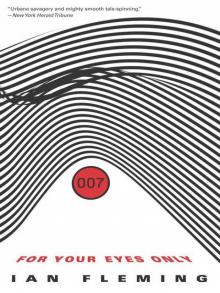 Bond 08 - For Your Eyes Only
Bond 08 - For Your Eyes Only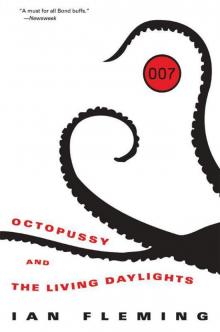 Bond 14 - Octopussy and the Living Daylights
Bond 14 - Octopussy and the Living Daylights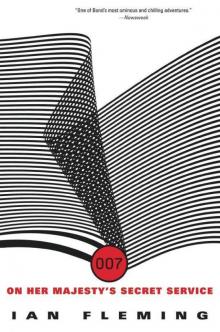 Bond 11 - On Her Majesty's Secret Service
Bond 11 - On Her Majesty's Secret Service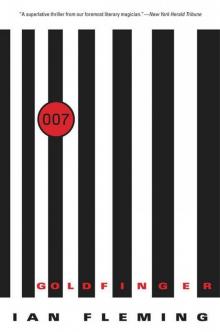 Bond 07 - Goldfinger
Bond 07 - Goldfinger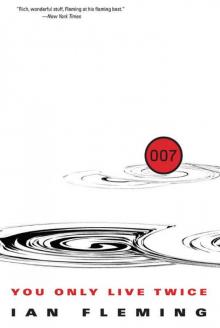 Bond 12 - You Only Live Twice
Bond 12 - You Only Live Twice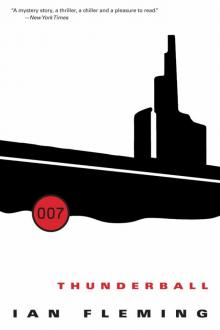 Bond 09 - Thunderball
Bond 09 - Thunderball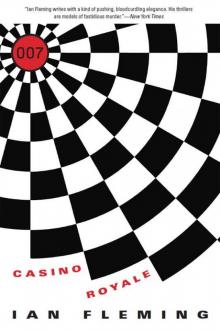 Bond 01 - Casino Royale
Bond 01 - Casino Royale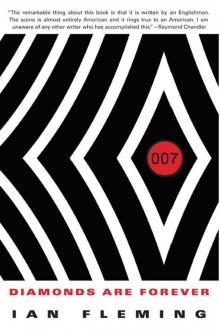 Diamonds are Forever (James Bond - Extended Series Book 4)
Diamonds are Forever (James Bond - Extended Series Book 4)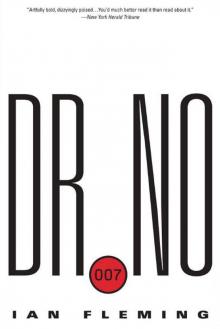 Bond 06 - Dr. No
Bond 06 - Dr. No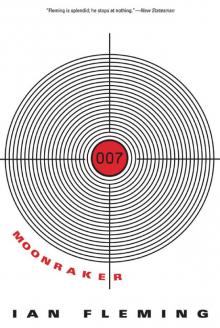 Moonraker (James Bond - Extended Series Book 3)
Moonraker (James Bond - Extended Series Book 3)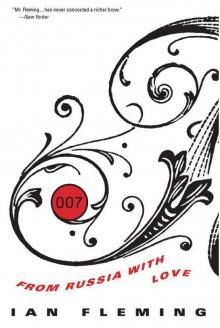 Bond 05 - From Russia With Love
Bond 05 - From Russia With Love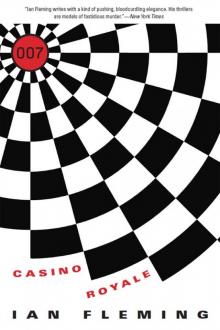 Casino Royale (James Bond - Extended Series Book 1)
Casino Royale (James Bond - Extended Series Book 1)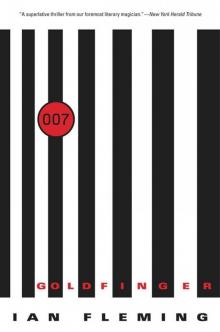 Goldfinger (James Bond - Extended Series Book 7)
Goldfinger (James Bond - Extended Series Book 7)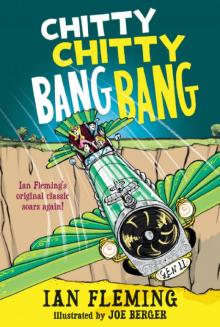 Chitty Chitty Bang Bang: The Magical Car
Chitty Chitty Bang Bang: The Magical Car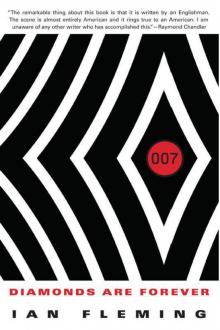 Bond 04 - Diamonds Are Forever
Bond 04 - Diamonds Are Forever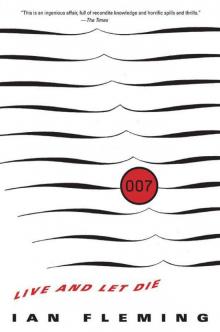 Bond 02 - Live and Let Die
Bond 02 - Live and Let Die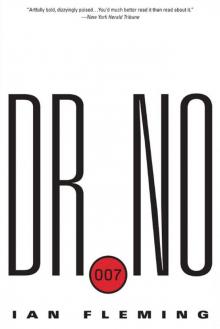 Dr. No (James Bond - Extended Series Book 6)
Dr. No (James Bond - Extended Series Book 6) The Hildebrandt rarity
The Hildebrandt rarity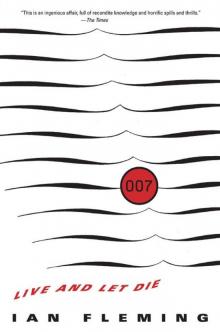 Live and Let Die (James Bond - Extended Series Book 2)
Live and Let Die (James Bond - Extended Series Book 2)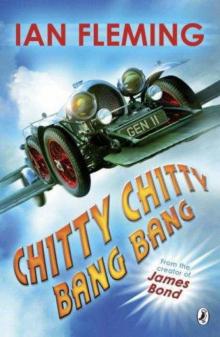 Chitty Chitty Bang Bang
Chitty Chitty Bang Bang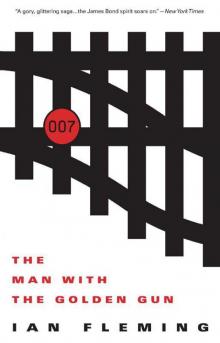 Bond 13 - The Man With the Golden Gun
Bond 13 - The Man With the Golden Gun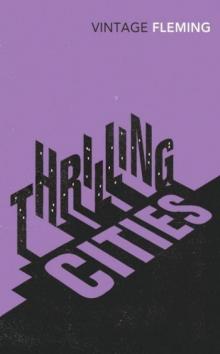 Thrilling Cities
Thrilling Cities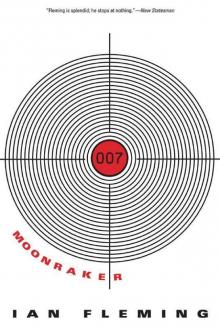 Bond 03 - Moonraker
Bond 03 - Moonraker